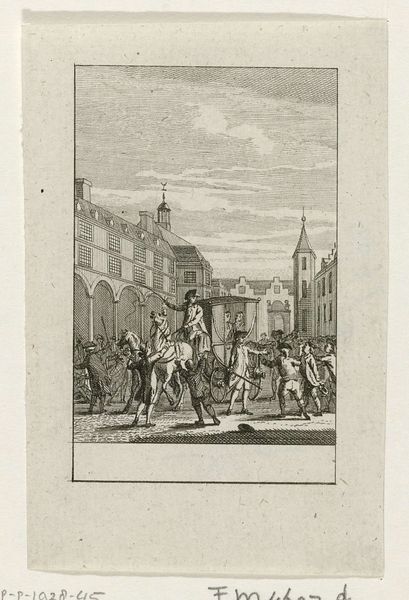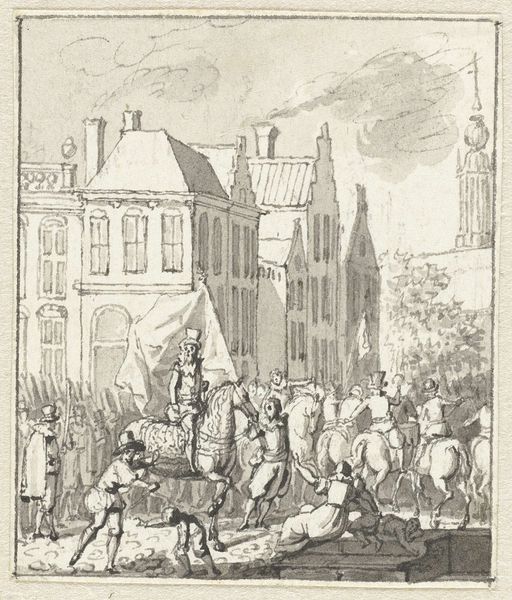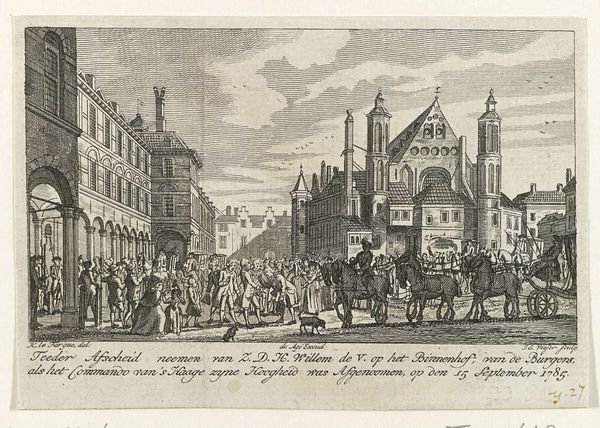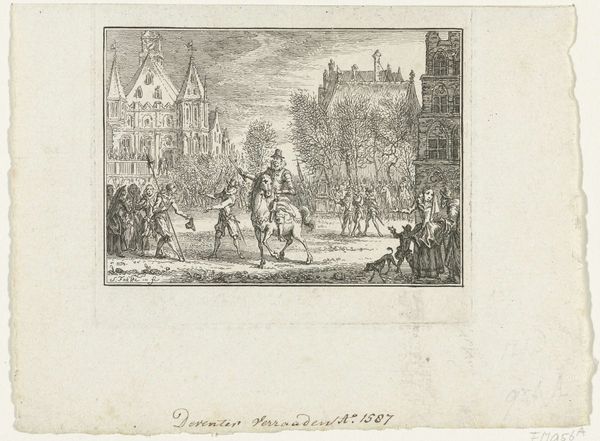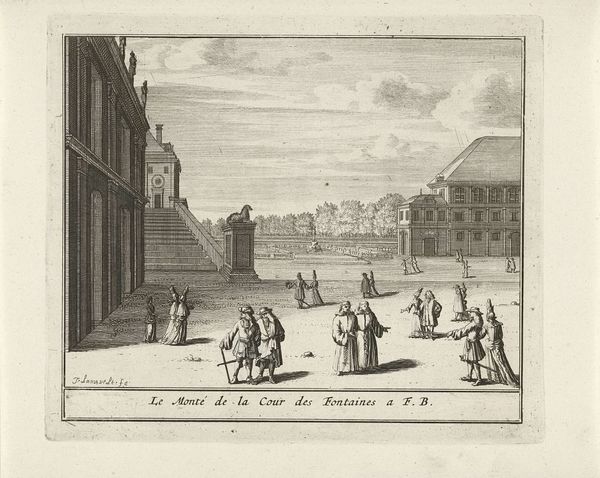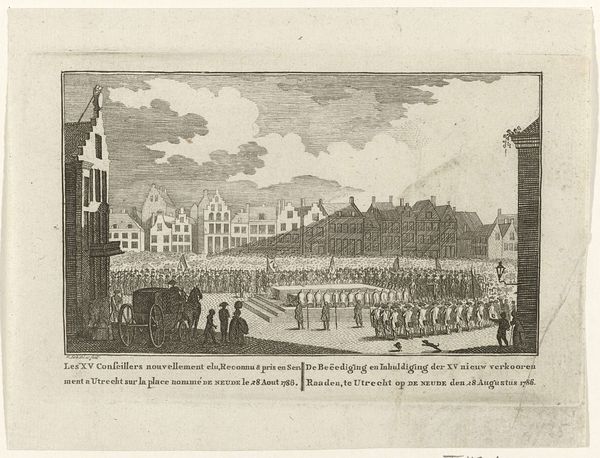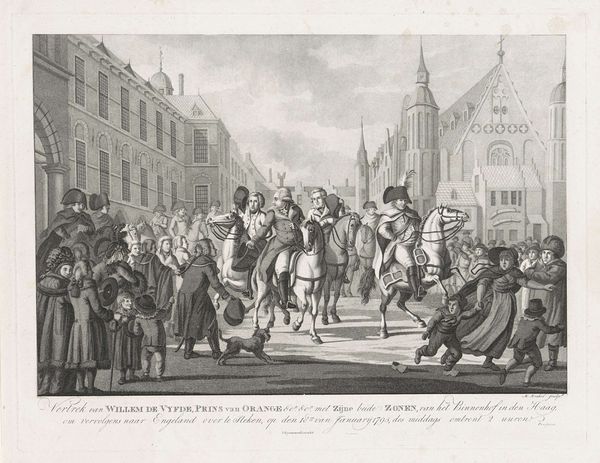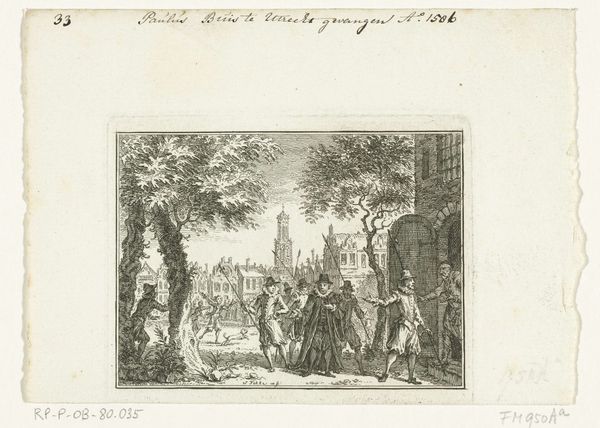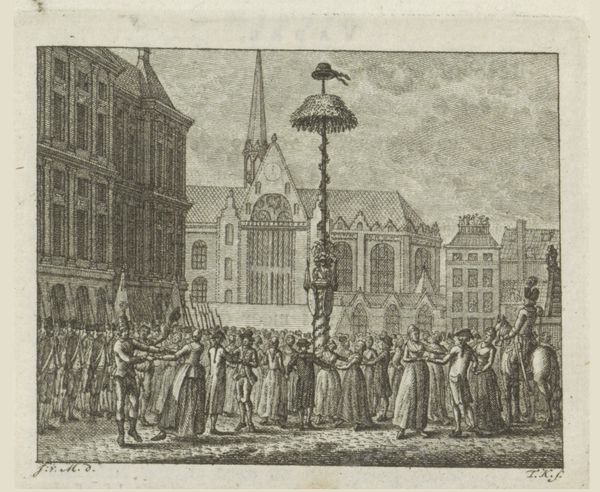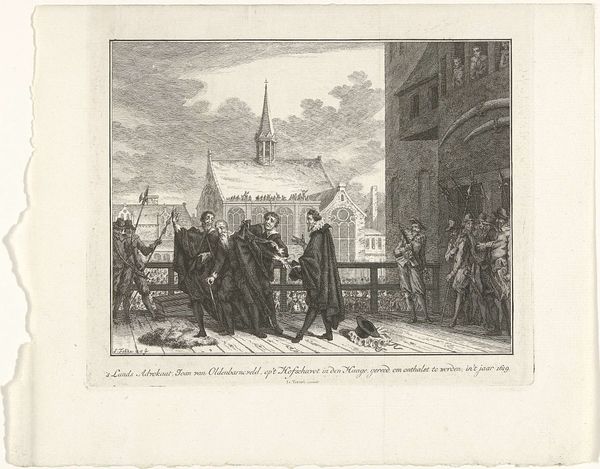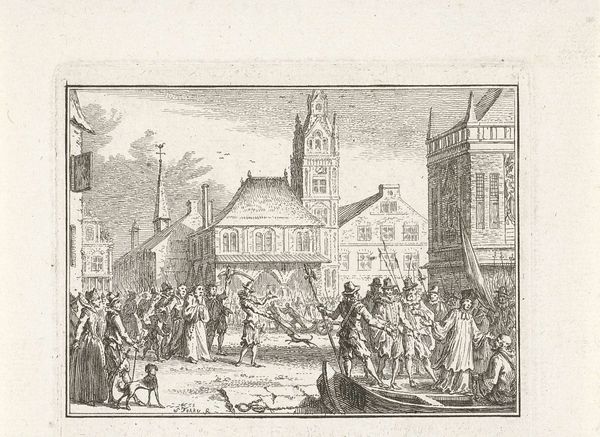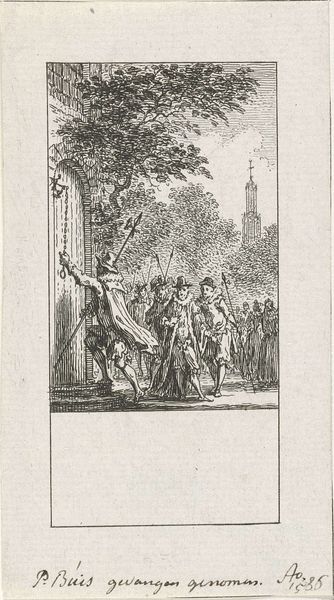
print, engraving
#
narrative-art
#
baroque
# print
#
pen illustration
#
old engraving style
#
history-painting
#
engraving
Dimensions: height 73 mm, width 80 mm
Copyright: Rijks Museum: Open Domain
Curator: We’re looking at an engraving by Simon Fokke, titled "Onthoofding van Johan van Oldenbarnevelt, 1619." It's estimated to have been made between 1756 and 1758. Editor: Well, it's rather...stark, isn’t it? Tiny, almost delicate lines depicting such a brutal scene. There's a weird disconnect there. All that architectural detail juxtaposed against raw human drama. Curator: The composition adheres to a linear perspective, drawing the eye toward the central act of execution. Observe how the building’s geometric forms frame the event, providing a structured, almost theatrical backdrop. Note the calculated use of light and shadow, emphasizing the spatial depth. Editor: The theatrics are unsettling. Is that a crowd on the rooftop? Like it’s a public spectacle…with, what, front-row seats? Chilling. And the executioner looms large, like some uncaring machine. Oldenbarnevelt seems so…small. Curator: Precisely. The artist captures a historical moment but does so through established compositional principles—reminiscent of Baroque narrative art, emphasizing the moment's gravity within a structured visual field. It transforms political drama into an almost classical tableau. Editor: Classical tableau? Even with the chopped head? I see tension—a push-pull between the artist's desire to capture an event and their apparent need to organize it, distance it. The controlled rendering seems to serve as an…armour against the emotional chaos inherent in the subject matter. Curator: Yes, it is precisely this controlled rendering that elevates the engraving. It is through this careful balancing of form and content that Simon Fokke ensures his work is legible. We can read the engraving to appreciate the narrative and its significance to the viewer. Editor: Legible, certainly. Moving? Less so. More a historical document elegantly disguised. But that restraint also grants it a unique power. To see something awful rendered with such...dignity...or remove-- that feels very truthful somehow. Curator: Indeed. Fokke's manipulation of the medium—engraving—transforms the visceral into a structured, understandable commentary. A perfect expression. Editor: Perfect is a strong word. Maybe "controlled" is closer to the mark. Either way, a fascinating blend of artistry and cold, hard history.
Comments
No comments
Be the first to comment and join the conversation on the ultimate creative platform.
